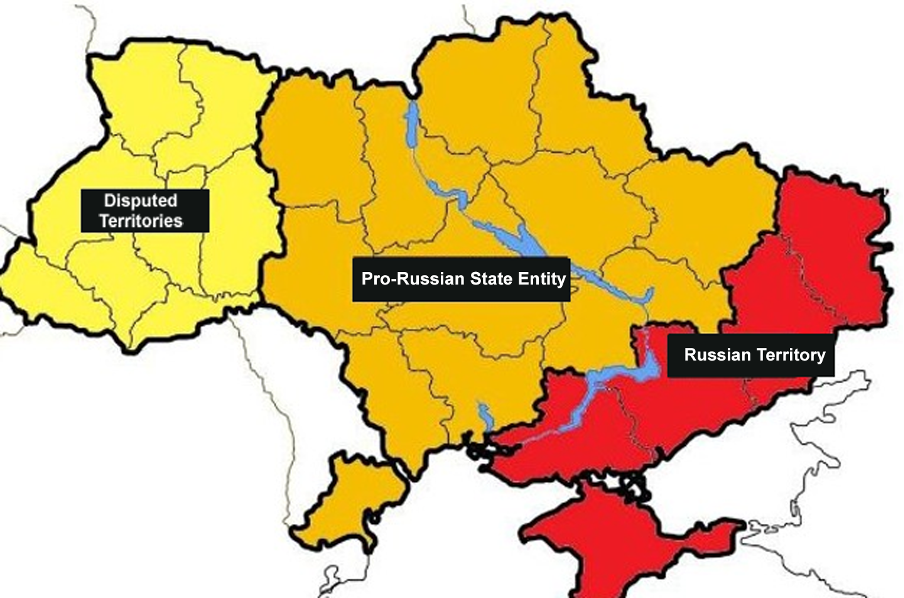Kyrylo Budanov, head of Ukraine’s Defense Intelligence (HUR), said on Saturday that drones produced in Ukraine at present could reach a maximum range of 1,800 kilometers (1,118 miles).
In a Facebook announcement commemorating the Day of Military Intelligence on Saturday, Sept. 7, Budanov said the drones were developed by specialists, including those employed by the HUR.
JOIN US ON TELEGRAM
Follow our coverage of the war on the @Kyivpost_official.
“Military airfields, which are a source of constant threat to peaceful Ukrainian cities, shudder from air attacks. The entire infrastructure of Russia, working for the war, has suffered and will suffer losses. After all, instead of defending its own, Russia chose the wrong path of an unprovoked war and an attack on sovereign lands of the state,” said Budanov in his announcement.
Budanov did not specify the models of the drones, nor whether they’d been used in previous drone strikes against Russian targets.
Ukraine’s Drone Strike Radius
Assuming the drones were launched from Kharkiv, Ukraine’s eastern capital bordering Russia, the alleged range of 1,800 kilometers (1,118 miles) would theoretically allow Ukraine to reach the Ural Mountains that separate the European and Asian parts of Russia, with cities such as Yekaterinburg and Chelyabinsk lying on the edge of said range.
Media reported a fire near a military factory in Yekaterinburg in July, and HUR reported a burned-down Su-34 tactical bomber at the Russian “Shagol” airfield in Chelyabinsk. However, HUR did not claim responsibility for either incident.

Over 100K Ukrainians Return to Russian-Occupied Donbas as Economic Hardship Grows
The alleged range also covers airbases in Russia-friendly Syria, where Kyiv Post received an exclusive video from HUR when it struck Russian troops stationed at the Kuweires airbase east of Aleppo.
Theoretically, the radius would cover the majority of – if not all – Russian airfields hosting Russian warplanes used against Ukraine.
While the Olenya airfield in Murmansk, which hosts long-range bombers and is located in the Arctic Circle, appeared to lie outside the 1,800-kilometer radius, HUR also claimed to have struck a TU-22M3 strategic bomber there in July.
The claim, if true, would likely mean the range of Ukrainian drones exceeded what Budanov stated, or that they were potentially launched from outside Ukrainian territories.
Striking Russian airfields?
Budanov specifically mentioned the attacks on Russian airfields in Saturday’s announcement.
To counter Russian aerial threats – which often come with jets launching bombs and missiles against Ukraine from within Russian airspace – Kyiv has been calling for the West to lift restrictions on Western-provided long-range weapons to eliminate the threats from their source, namely airfields.
Western long-range weapons in Kyiv’s possession included the US-made Army Tactical Missile System (ATACMS), which has a range of 300 kilometers (186 miles), and the UK-provided Storm Shadow cruise missile, which has a range of over 250 kilometers (155 miles).
However, the West has thus far refused to lift the restrictions for fear of escalation.
If Ukraine has had some success striking targets inside Russia, including oil facilities and airfields, with domestically-produced unmanned aerial vehicles (UAVs) instead, why is there a need for Western long-range weapons?
It’s likely to do with the windows of opportunity.
While Western long-range weapons generally have more firepower and are more accurate – with the added possibility of being equipped with target-specific warheads – their high speed is likely the decisive factor in striking airfields.
With drones, it can take hours to reach their targets – albeit more discreetly than missiles at times – at which point Moscow could simply re-deploy the warplanes, and the threat is averted.
With missiles, however, there would be little warning time – especially for airfields closer to the Ukrainian border – with the added benefit that it is more difficult to intercept a missile flying at multiple times the speed of sound versus a subsonic drone at low speed.
Add the cluster munition warheads available for missiles such as ATACMS, and Ukraine has the perfect recipe for airfield strikes – and all it takes now is a green light from the West.
You can also highlight the text and press Ctrl + Enter






